In the previous chapter we looked at how to plan in advance to cover breaking stories so that you will be ready when something happens. We also discussed what to do when it when a big story breaks. In this chapter we take you through a breaking story minute-by-minute to see how it is done.
____________________________________________________
Having looked at what breaking stories are and how to cover them in the previous chapter, let us now follow through an example of a weekly newspaper handling a breaking story.
We could just as easily look at a daily newspaper or radio or television coverage. The time lines may be different and some of the subject matter, reporting methods and writing techniques would change according to your particular medium and organisation. But the flow of news and the principles which guide your decision-making should be applicable across most media.
For those working in the print and online media, we have illustrated how the pages will change as the coverage progresses. Broadcast journalists can think in terms of re-jigging bulletins as the information changes.
The newspaper we have chosen publishes every Friday. It has an editor, one sub-editor, three reporters (one of whom is on holiday, though still in town), a typist and its own processing facilities and printery.
It is 4.43 p.m. on Thursday, and the week's work is almost done for the journalists. The deadline for the front and back pages is 6 p.m., and the last story has been written. The chief sub-editor is just editing it and writing its headline. The reporters are chatting, waiting for the editor to say they can go home.
Then the phone rings, and the editor answers it. It is a reader, at the coastal village of Rawila, to say that there has been a terrible road accident. A bus has gone off the road and plunged down a ten-metre drop into the sea. They think there are lots of people killed. The editor thanks the reader for calling, and puts the phone down. Events now proceed like this:
4.44 Newsroom - Editor phones police: they confirm that there has been a serious road accident at Rawila.
4.46 Newsroom - Editor tells chief sub-editor (CSE) to get more staff in.
4.47 Newsroom - Editor goes to see the printers. They say they cannot put back the 6 p.m. deadline and still get the paper out in time to catch the boat for the outer islands. However, they agree to limit the print run on that first edition; then reprint the front and back pages only for a late second edition, with a deadline of pages from the newsroom of 10 p.m. All the other staff phone home to tell their families they will be late.
4.49 Newsroom - CSE phones the reporter who is on holiday (Cathy) at home; she tells her that there is a major story and asks her to come to the office immediately. A taxi will come to collect her, he says. CSE then phones for a taxi.
4.50 Newsroom - The assistant makes coffee for everyone.
4.51 Newsroom - CSE phones a former reporter (Dudley), who is now a Government information officer. Dudley is about to leave his office. CSE explains that there is a major story and asks Dudley to come and lend a hand. Dudley drives straight round to the newspaper office, first asking his secretary to phone his wife and tell her he will be home late.
4.52 Newsroom - Editor returns from the printery. He calls an immediate editorial conference. The two reporters (Aaron & Bill) are sent to Rawila, with the office car, a digital camera and spare memory cards. They are told to send 400 words by 5.40, by phone. Although it is doubtful whether there is mobile phone reception in the village, it is clear that there is a telephone, since a reader has just telephoned from there. Then they are told to call in again not later than 6.15 with an update. Finally, one of them is to return to the office as soon as possible with pictures.
5.00 Newsroom - The two reporters set off for Rawila, five kilometres away. They run into a traffic jam, caused by the crash.
Editor and CSE discuss the redesign of page one, which had been planned to look like Figure 1.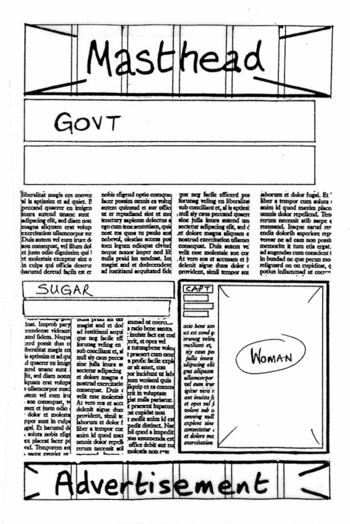
Figure 1: the original plan for page one
They decide to clear the top half of the page for the 400-word story on the crash, still using two lines of large headline across the top of the page. The story catchlined "Govt" is to be carried full-length if possible, and without changing the type to standard column measure; the picture is to be used much smaller; and the story catchlined "sugar" cut into the remaining space. The advertisement must remain. CSE redesigns the page as shown in Figure 2.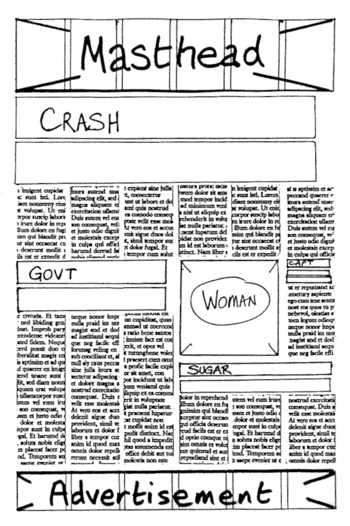
Figure 2: page one, as redesigned for first edition
5.02 Newsroom - Dudley arrives. Editor tells him to get comments from the Prime Minister, the Ministry of Transport, the bus company, community leaders in Kalo, which is the district the bus was heading for, and anyone else he can think of.
CSE gets on with redesigning page one - cutting stories already subbed and sent, rewriting headlines etc.
5.05 Newsroom - Dudley phones the Prime Minister's office. He is told the Prime Minister is busy. He explains the situation and says he will call again at 5.30. He asks whether the Prime Minister will still be in his office, and is told that he will.
Editor checks the paper's library files for details of the country's last big road crash. He finds that there were five people killed in a two-car collision in 1974. That is the worst road accident on record.
5.07 Rawila road - The reporters' car is stuck in stationary traffic. Aaron gets out of the car, with the camera, about one kilometre from the crash. He walks and runs the rest of the way. They agree that Bill will follow with the car.
5.09 Cathy's house - The taxi arrives. Cathy gets in and they set out for the office.
5.10 Rawila - Aaron arrives at the scene of the crash. He knows that words are needed before pictures, but he also knows that there is only another 60-90 minutes of good daylight; so he quickly takes pictures of the injured people sitting and lying around; of a partly covered dead body, lying by the water; and the back end of the bus, visible above the surface of the water. Then he talks to people who are around - one or two injured people, who are conscious and apparently not in too much pain; bystanders, who may have witnessed the accident. He is told by one of the injured people that there were "about 20" people on the bus, including some children. Aaron counts the injured people, and finds that there are seven. There is also the one dead body. That means that there are probably about 12 more people still in the bus, who must certainly be dead. An eye-witness also reports that a car was involved, and went into the sea with the bus. Nobody can say how many people were in the car.
5.12 Newsroom - Dudley phones the Ministry of Transport. Everybody has gone home. Using the newsdesk contacts book, he phones the Minister at home and explains the situation. The Minister immediately makes a statement for publication, saying that he is deeply saddened by the news and will call for full details of the accident first thing the next morning.
5.15 Rawila road - An ambulance arrives at the back of the traffic jam, and police force all cars to the edge of the road to let it through. Bill follows closely behind as it goes past him, and follows it to the crash scene. As soon as he arrives, he finds Aaron, who asks him to find a telephone. He goes off to do so, and finds one in a nearby house. The owner agrees to let them use it whenever they want to. Bill phones the newsroom to make contact, then returns to tell Aaron.
5.20 Newsroom - Cathy arrives. Editor tells the taxi to wait. Editor briefs Cathy to go to the hospital and get full names and other personal details, and condition reports, of all injured people. She is to phone in at 5.45 with a situation report, and phone in a 300-word story at 8.30.
5.25 Newsroom - Cathy sets out in the taxi to go to the hospital.
5.25 Rawila - Aaron sits on a rock and writes the first few paragraphs of his early story, plus outline notes for the rest of the story.
5.30 Newsroom - Dudley phones the Prime Minister's office again. He is told that the Prime Minister is busy. Dudley explains the situation again, and asks whether the Prime Minister will be available at all to issue a statement. The person at the other end of the phone says he does not know. Dudley asks whether he will please ask the Prime Minister. The person at the other end of the phone says he cannot do that, because the Prime Minister is busy. Dudley explains that the Prime Minister will be very disappointed to read in the next morning's paper that he was "not available for comment" at such a moment of national tragedy. Dudley says he will call again at 6.00.
CSE finishes her redesign of page one; there is now just space for 400 words plus a big headline.
5.31 Newsroom - Editor and CSE confer again, to ensure that all is under control.
5.33 Hospital - Cathy arrives. She learns that the first two injured people arrived about ten minutes earlier. She finds the duty sister in Casualty and explains who she is and what she wants. The sister tells Cathy not to get in the way, and she can have the information she needs as it becomes available.
5.35 Rawila - Aaron goes to phone his copy to the office. He reads it out, while the assistant at the other end types it straight into the computer. He reads the first few paragraphs, which he has already written, then creates the rest of the story out loud from the notes. Meanwhile, Bill continues to interview people at the scene of the crash. He finds a young man who rescued several of those people who escaped, by diving repeatedly into the wrecked bus and pulling them out.
5.40 Newsroom - Dudley phones the bus company. They decline to discuss the matter. Dudley tries and tries to get them to talk, but they won't. Dudley asks the name of the person he is speaking to, but he will not say; and then he hangs up.
5.45 Hospital - Cathy phones the office; she tells the editor that she will be given information by the duty sister in Casualty.
5.46 Newsroom - Editor writes three or four paragraphs of background material, about the 1974 crash, ready to be incorporated into the story which Aaron will write.
5.48 Newsroom - Dudley looks up who is MP for Kalo. He discovers that it is Mr Isaac Gesund, who is Minister of Health. He phones Mr Gesund's office, but there is no reply.
5.49 Newsroom - Editor reads Aaron's copy; hands it to CSE.
5.50 Hospital - Ambulance arrives with two more injured people, both on stretchers. One is a child. The ambulance goes again.
5.53 Newsroom - CSE sub-edits Aaron's copy; incorporates the editor's background copy; checks it for length and cuts a bit to make sure it will fit; writes a headline; and sends the whole page to the printers.
5.55 Hospital - The sister brings Cathy the names and other personal details of the first two injured people. She says that no condition reports are yet available. Cathy asks how many ambulances there are, and is told that there is only one, which is driving backwards and forwards bringing all the injured.
5.59 Newsroom - Page one of the first edition is approved, and goes to have a printing plate made.
6.00 Newsroom - Dudley phones the Prime Minister's office again. The Prime Minister is available for comment. He tells Dudley he is greatly saddened by the news, and will be asking the Minister of Transport for a full report at the first opportunity.
6.01 Rawila - Aaron returns to the crash scene. He takes photos of the rescue hero whom Bill has found, plus more pictures of the scene, including ambulance paramedics at work. He then removes the memory card from the camera, gives the camera (with a fresh card) to Bill, and sets off to drive back to the newsroom.
6.03 Newsroom - The assistant makes coffee for everyone.
6.05 Newsroom - CSE starts to plan page one and back page of the second edition. The back page of the first edition was as shown here in Figure 3. 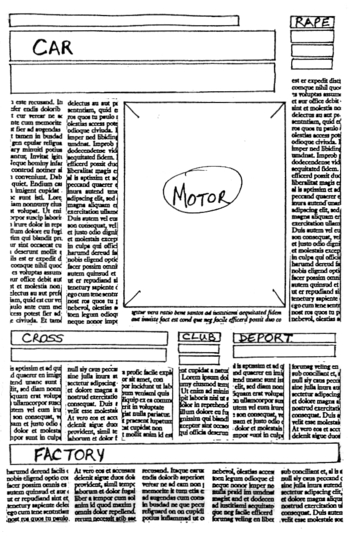
Figure 3: the back page of the first edition
She redesigns page one and the back page as shown in Figures 4 and 5.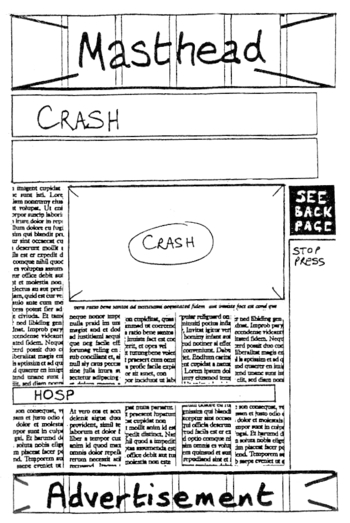
Figure 4: page one as first designed for the late edition
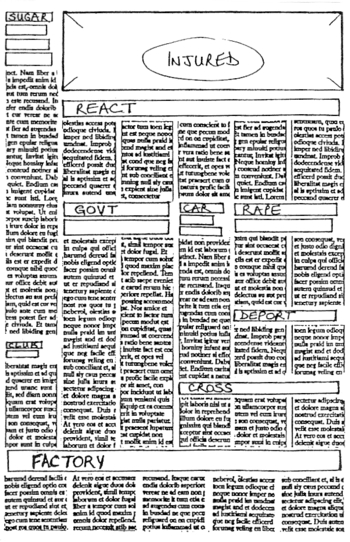
Figure 5: the back page as first designed for the late edition
Page one will carry the main story which Aaron is writing, with a big picture, and Cathy's hospital report. There will also be a white-on-black reversal to cross-refer to the story on the back page. The back page will carry another picture, plus Dudley's story. It will also carry short versions of all the other stories which were originally on page one and the back page, except the picture story "Woman", which has been dropped. The story "Govt" will have to be changed to a standard single-column measure, but "Factory" is to be left as it is. CSE redesigns early stories, cutting them and rewriting headlines, to fit in with the new plan.
6.10 Newsroom - Aaron arrives, delivers the memory card of photos and reports that they have found a rescue hero. The editor hears the details and then sends him back to the scene of the crash, with orders to return to the office by 8.00 to write a 600-word story on the crash, but not to include the rescue hero. Bill is to write a 300-word story on that and phone it in by 7.00. Aaron sets off to drive back to Rawila.
6.12 Newsroom - Dudley phones Mr Gesund's home. He is told that he has not yet returned home and is probably working late. Dudley says he is not at his office. They say he may be at his club and that he does not carry a mobile phone.
6.13 Newsroom - Editor and CSE confer again, listing all the stories they expect - now including the 300-word rescue hero story. CSE redesigns page one and the back page to include this story and a small picture, pushing "Hosp" to the back page and relegating "Sugar", "Rape" and "Deport". "Club" is thrown away. The pages now look as shown in Figures 6 and 7.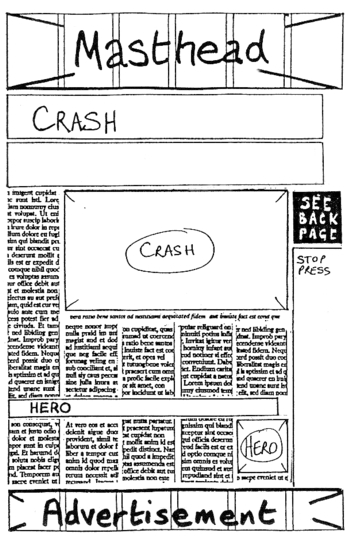
Figure 6: page one redesigned with 'rescue hero' story.
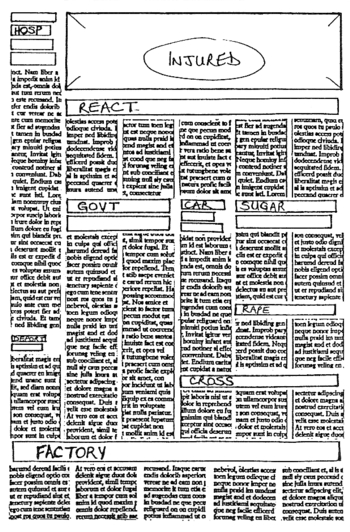
Figure 7: the back page re-designed after putting 'rescue hero' story on page one.
6.15 Rawila - Bill phones the office. Editor tells him to write a 300-word story on the rescue hero and phone it in by 7.00. He tells him Aaron is on his way back to rejoin him. Bill completes his interviews and writes the story.
6.18 Newsroom - Dudley phones Mr Gesund's club. He is not there. They do not know where else he socialises.
6.20 Hospital - Ambulance arrives again, with three more injured people. One is carried on a stretcher, the other two walk, with help. Cathy asks the ambulance officers whether there are any more injured people to come, and they tell her that there are no more.
6.23 Newsroom - Editor and CSE look at Aaron's photos and choose which they will use. They choose a vertical picture of the bus in the water, a mugshot (head and shoulders) of the rescue hero and a horizontal picture of ambulance officers helping the injured. CSE redesigns page one again, around the strong vertical picture they have chosen, as shown in Figure 8.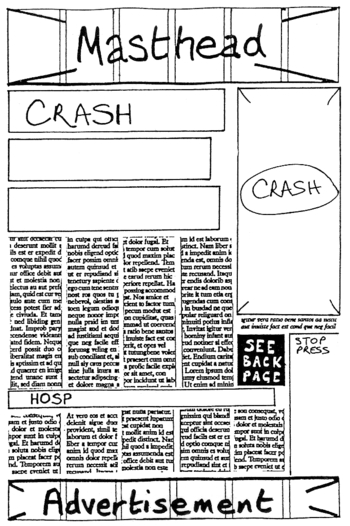
Figure 8: page one redesigned again around the strong vertical picture which has been chosen
6.25 Newsroom - Dudley writes up what he has so far - the Prime Minister's comments, the Minister of Transport's comments, and an accurate report of the bus company's reaction. He ends it with the letters "mfl" (more follows later) and sends his copy to the editor (6.40).
6.30 Rawila - Aaron arrives back at the scene of the crash. He talks to more eyewitnesses, and finally finds one woman who saw it all: the bus driving fast, overtaking a car, suddenly meeting another car coming the other way, braking hard, skidding on the muddy road, and going through the barrier and over the edge into the sea, taking with it the car it had been overtaking.
6.35 Hospital - The duty sister brings Cathy the names and other personal details of the two injured people brought in the second ambulance journey. She says there are still no condition reports yet; but they will issue condition reports on all seven crash victims at about 9.00. Cathy explains her copy deadlines and asks please can she have these details by 8.00 at the latest. The sister says that she will see what she can do, but can make no promises.
6.45 Newsroom - Editor gives Dudley's reaction story to CSE, who sub-edits it and writes a headline.
6.55 Rawila - Bill phones the office and dictates his 300-word story on the rescue hero to the typist, who types it straight into the computer.
7.00 Newsroom - Dudley again phones the Minister of Health's home; he is not there. Dudley again phones the Minister's club; he is not there. Dudley writes a holding paragraph in case he is unable to get the Minister at all: "The MP for Kalo, where the bus was going, is Mr Isaac Gesund, Minister of Health. He could not be contacted for comment last evening."
It is now getting dark.
7.05 Newsroom - Editor reads Bill's rescue hero story. He makes some alterations, then passes it to CSE.
7.10 Newsroom - CSE sub-edits Bill's rescue hero story and writes headline.
7.10 Hospital - The duty sister brings the names and personal details of the final three injured people to Cathy. She says she will have all seven condition reports available by 7.45. Cathy thanks her.
7.14 Hospital - Cathy sits down to write her story. She leaves a space for the condition of each person to be inserted later; and she puts each person on a separate sheet of paper, so that she can rearrange them in the right order later, with the most seriously injured first and the least seriously injured last.
7.15 Rawila - Bill returns to the crash scene. Police and divers arrive, with floodlights, to recover the bodies from the wrecked vehicles. The two reporters agree that Bill will stay and watch this, and phone the newsroom if it produces anything newsworthy.
7.20 Newsroom - Dudley phones the Bishop, tells him about the crash and asks whether he has a message of comfort for the bereaved. The Bishop gives him a few comforting words. Dudley writes a couple of paragraphs quoting the Bishop, and hands it to the editor to add to the story.
7.25 Newsroom - Editor reads Dudley's add copy, then passes it to CSE.
7.35 Newsroom - CSE goes to the printery to monitor progress there.
7.40 Rawila - Aaron finishes his interviews and leaves to drive to the newsroom.
7.50 Newsroom - Aaron arrives. Editor discusses the story with him; tells him about the background paragraphs which he has written; and agrees the structure of the story. Aaron starts to write his story, using some material included in the original story, but bringing it all up-to-date and including much detail which was not available at 5.30 - especially the detailed eyewitness account of the crash.
7.52 Newsroom - The assistant makes coffee for everyone.
7.55 Hospital - The duty sister brings the condition reports to Cathy. Two, including one child, have head injuries and are in a critical condition; the others are not in a critical condition.
8.00 Hospital - Cathy sorts out her story, inserting the condition reports and putting the people in the right sequence. She then phones the newsroom and dictates the story to the assistant.
8.00 Newsroom - Dudley tries again to phone the Minister of Health at home and at his club: he is still at neither place. Dudley hands the holding paragraph which he has written to the editor, to add to his story. The editor thanks Dudley for all his help and says he can go home now.
8.05 Rawila - The first diver goes down to survey the scene. He comes up to report that there are nine bodies in the bus - four men, three women, one child and one baby; and one man in the car.
8.05 Newsroom - CSE returns to his desk. She shows Aaron the three pictures being used and asks for information about each one. Aaron provides details, and CSE writes the captions.
8.15 Newsroom - CSE sub-edits Dudley's final paragraph and incorporates it into the page.
8.15 Rawila - Bill phones the office to tell them how many bodies have been found. Editor hears the news, then passes Bill on to Aaron, to discuss it in detail. Aaron incorporates this information into his story by rewriting the early paragraphs and inserting three paragraphs of detail about the dive lower down in the story.
8.17 Newsroom - Editor reads Cathy's copy; he passes it to CSE.
8.19 Newsroom - Back page is approved, and goes to have a printing plate made.
8.20 Newsroom - Editor phones for a taxi to go to the hospital, collect Cathy and bring her back to the office.
CSE sub-edits Cathy's copy and writes headline.
8.25 Newsroom - Editor discusses with Aaron how to structure the story now, including the information about the number of bodies. Aaron phones the police to ask if they will release the names of the dead people. The police say they will not be able to do so until tomorrow.
8.45 Newsroom - Taxi arrives with Cathy. Editor sends the assistant home in it.
9.00 Newsroom - CSE starts to sub-edit Aaron's copy, but leaving the first few paragraphs to one side.
9.15 Newsroom - Cathy phones the hospital to see whether there are any further developments, and asks to speak to the duty sister in Casualty. The sister tells her that one of the injured people has died - the adult who was critically ill - but that all the others are in a stable condition. Cathy tells the editor, then phones the police to see if they will inform the next-of-kin tonight. The police say they cannot promise to do so, and ask that the name should not be published yet. Editor tells Aaron to amend his story to incorporate this new development, making it now a total of 12 people who have died - but not to use the name of the person who has died in hospital.
9.30 Newsroom - Aaron finishes his story and hands it to the editor, who reads it, then passes it to CSE.
9.35 Newsroom - CSE sub-edits the rest of Aaron's story and writes the headline.
9.50 Newsroom - Page one is completed and goes to have a printing plate made.
10.00 Newsroom - Aaron is sent out to take Cathy home, then go to the crash scene and collect Bill.
10.05 Rawila - The divers report that the dead man in the car is the Minister of Health, Mr Isaac Gesund.
10.06 Rawila - Bill checks with the police that Mr Gesund's family will be informed tonight, then runs to the telephone and phones the editor to tell him about the dead man in the car being Mr Gesund.
10.08 Newsroom - Editor tells CSE about the late development. While editor writes a Stop Press paragraph, CSE runs to the printery to tell them to hold page one. The printing plate is almost made, but the process is stopped.
10.10 Newsroom - A Stop Press paragraph, in big capital letters, saying: LATE NEWS: CAR DRIVER KILLED IN RAWILA CRASH BELIEVED TO BE MINISTER OF HEALTH, HON ISAAC GESUND is hastily inserted into the Stop Press space on page one, which goes again for platemaking.
10.15 Newsroom - CSE remains in the printery to see the second edition away. Editor remains in the office in case there are any more calls about further developments.
10.25 Rawila - Aaron arrives at the crash scene, collects Bill, and takes him back to town.
10.50 Newsroom - The presses start to roll with page one and the back page. Editor and CSE each grab a copy of paper and sit down to discuss it.
11.10 Office - Editor makes a note reminding himself to thank all the staff next day, and leaves it on his desk. He and CSE go home.
TO SUMMARISE:
Keep a cool head: don't panic
Plan how best to use the resources you have
Make sure everyone has clear instructions
Make sure everyone keeps in touch with the boss
Keep to deadlines, even if it means writing an incomplete story
^^back to the top
>>go to next page

